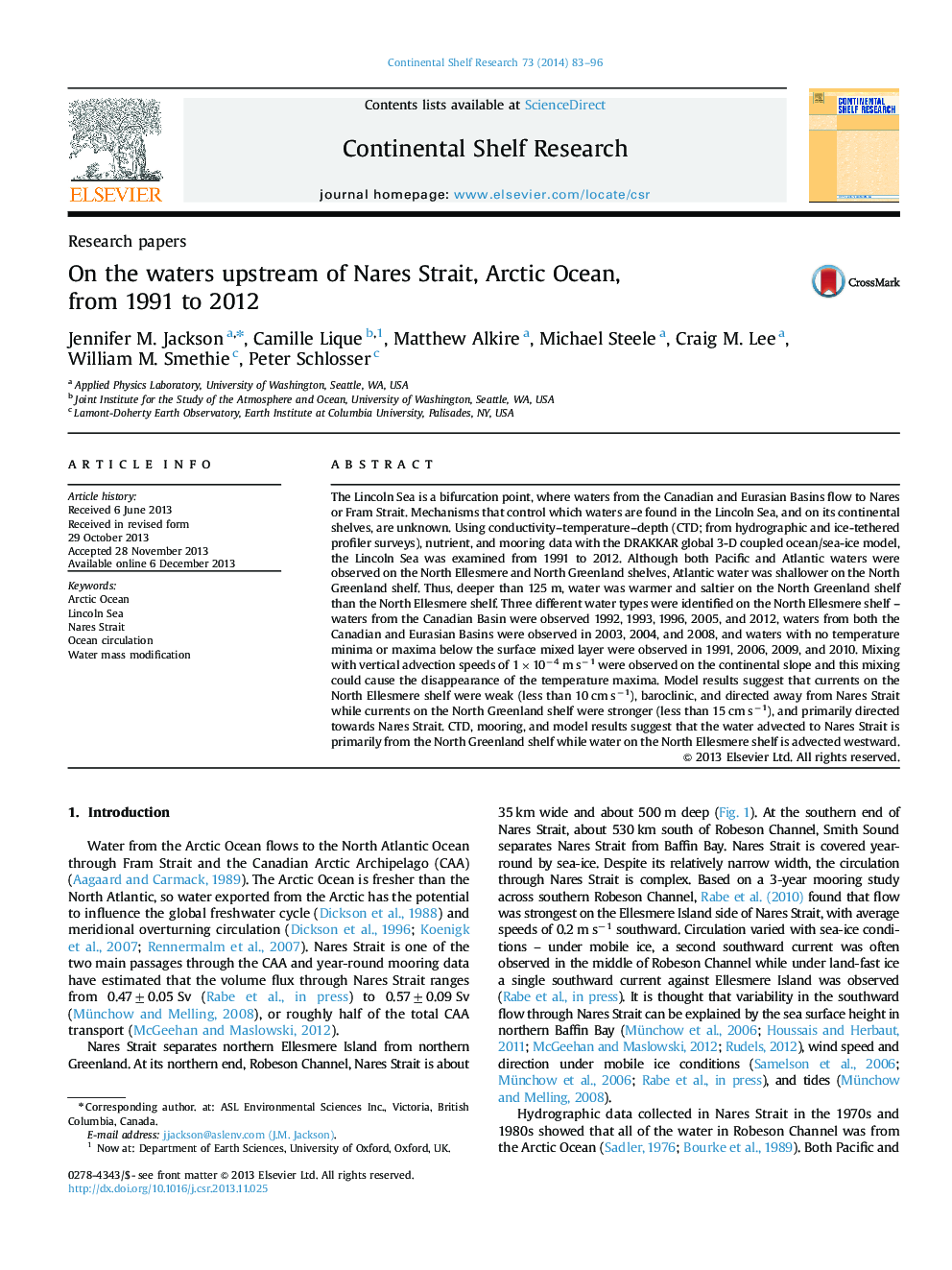| کد مقاله | کد نشریه | سال انتشار | مقاله انگلیسی | نسخه تمام متن |
|---|---|---|---|---|
| 4531953 | 1626139 | 2014 | 14 صفحه PDF | دانلود رایگان |
• The oceanography of the North Ellesmere shelf and the North Greenland shelf is different.
• From 1991 to 2012, three different water types were identified on the North Ellesmere shelf.
• Currents on the North Ellesmere shelf that are slow are directed away from Nares Strait.
• Currents on the North Greenland shelf are faster, surface-intensified, and directed towards Nares Strait.
The Lincoln Sea is a bifurcation point, where waters from the Canadian and Eurasian Basins flow to Nares or Fram Strait. Mechanisms that control which waters are found in the Lincoln Sea, and on its continental shelves, are unknown. Using conductivity–temperature–depth (CTD; from hydrographic and ice-tethered profiler surveys), nutrient, and mooring data with the DRAKKAR global 3-D coupled ocean/sea-ice model, the Lincoln Sea was examined from 1991 to 2012. Although both Pacific and Atlantic waters were observed on the North Ellesmere and North Greenland shelves, Atlantic water was shallower on the North Greenland shelf. Thus, deeper than 125 m, water was warmer and saltier on the North Greenland shelf than the North Ellesmere shelf. Three different water types were identified on the North Ellesmere shelf – waters from the Canadian Basin were observed 1992, 1993, 1996, 2005, and 2012, waters from both the Canadian and Eurasian Basins were observed in 2003, 2004, and 2008, and waters with no temperature minima or maxima below the surface mixed layer were observed in 1991, 2006, 2009, and 2010. Mixing with vertical advection speeds of 1×10−4 m s−1 were observed on the continental slope and this mixing could cause the disappearance of the temperature maxima. Model results suggest that currents on the North Ellesmere shelf were weak (less than 10 cm s−1), baroclinic, and directed away from Nares Strait while currents on the North Greenland shelf were stronger (less than 15 cm s−1), and primarily directed towards Nares Strait. CTD, mooring, and model results suggest that the water advected to Nares Strait is primarily from the North Greenland shelf while water on the North Ellesmere shelf is advected westward.
Journal: Continental Shelf Research - Volume 73, 1 February 2014, Pages 83–96
